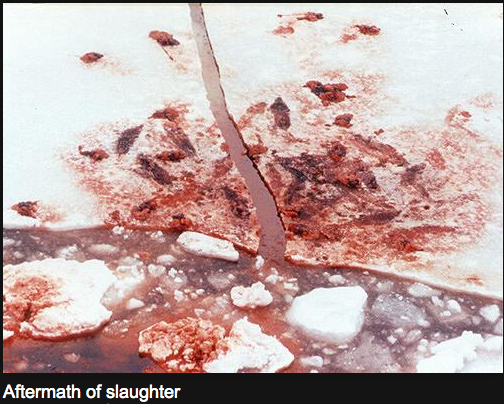
Image source: Flickr.
The eastern coast of Canada is a symbol of the beauty, vastness and cultural
integrity of our country. Canadians who live near fisheries in Eastern Canada
pride themselves in the preservation of their lakes and rivers. The earth and
oceans have been shaped by hard working Canadian hands that value and respect
the estuaries which support the economic backbone of settlements along the
Canadian coast. However with a decrease in animal population control,
particularly pertaining to the seal hunt, the fishing industry has taken a huge
loss in fish stocks due to the overpopulation of seals. The seal hunt itself
has become a Canadian symbol that challenges the connotations of the
preservation of Canadian wildlife, as well as the values of the people who live
along the eastern seaboard.
Although this issue is most vividly seen along the coast of Newfoundland and
Labrador, places farther west such as the Gaspe Coast are starting to feel the
pinch. For example, small towns such as Cascapedia St - Jules are one of many
pockets in Eastern Canada where fishing is a life line that brings vitality to
the community after the frozen winter months. During the Spring the town itself
becomes alive, flowing in total synchronic harmony with the river. As the ice
in the lakes and rivers thaw fishermen prepare their boats and canoes in
anxiety for the approaching fishing season. These Gaspesians respect the
dichotomy of give and take while working fluidly along side the river. By truly
living off the land, the river becomes the supporting vein of vitality that
allows Cascapedia St - Jules to function. Without the river and its salmon
pools, the town would become a desolate and barren mark left on the hide of the
Gaspe coast. However, with an increase in the Harp Seal population, seal packs
have shifted their habitat further west in order to find sufficient feeding
grounds. The result is a depletion of Salmon in rivers such as the Cascapedia.
This is a grim reality for a town that survives solely on Atlantic Salmon. But
the real challenge is in dealing with population control and the issues which
surround the connotations of the notorious seal hunt.
The Canadian seal hunt has become a popular protest site for animal rights activists
and on the other end of this protest there is a strong awareness of human
rights and well being in reference to employment, income and sustainability.
With this unstable dichotomy, the seal hunt has become a tension high issue
that represents Canada in the eyes of the world. The seal hunt has become
a wildfire the spreads across the Canadian North. It is shaped as a
chaotic cluster of emotion, beliefs and stances that spill out in the hearts of
protestors and fishermen alike. This fire that has been fueled by economic,
environmental and political, gestures has grown so out of control that the
chaos has become symbolic of the "great" Canadian north. Yet this symbol
reveals itself to the world as a blood sport thirsting for merciless barbaric
bludgeoning. The seal hunt depicts itself in the crimson stained snow like the
red that soaks into the white backdrop of our national flag.
The clashing dichotomy of give and take has spiraled into an almost superficial
falsehood, where celebrities such as the McCartney's and Pamela Anderson
exercise a demonstration which provokes a means to take away from Canadian
livelihood. The seal hunt has become a symbol that veils rural, natural and
traditional Canadian culture. When I stand on the shores of the Cascapedia
and watch seals parade up and down the current with salmon in their mouths it
is easy to realize just how much the seal hunt and animal population control is
really
destroying.
Leave a comment